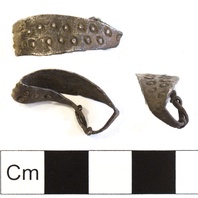
Viking Objects
Stamped Finger Ring (NCL-90DD85)
A silver finger ring made from a sheet of silver cut to size featuring circular punched decoration. Rings like this with knotted ends are typically Scandinavian.
Read More
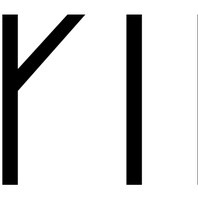
Viking Names
Viking
The male name Víkingr is recorded in some eighteen Viking Age runic inscriptions from Denmark and Sweden, and there is evidence it was used in Norway in the Viking Age and even later. It probably derives from the appellative (common noun) víkingr, the meaning of which varies through time and in the different sources. In Lincolnshire, the place-name Wickenby is formed of either the name or the appellative plus Old Norse -by ‘farm, settlement’. In Leicestershire, the element is combined with Old English tun in Wigston Magna (while Wigston Parva has a quite different origin), and is thus a hybrid name. In this case, the parallels with other hybrid names suggest that the personal name is more likely than the appellative as the first element.
Read More

Viking Names
Gamal
Gamall originally a byname meaning ‘the old one’, is fairly frequent in Norway from the eleventh century onwards and is found in some Norwegian place-names. The name is also found in Sweden and Denmark. It is one of the most common Old Norse male personal names found in the Danelaw. Gamall is also the first element in Gamston, Nottinghamshire.
Read More
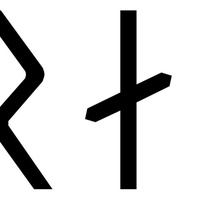
Viking Names
Grein
Grein is an original byname of which the interpretation is not certain. It is derived from Old Norse grein ‘branch’ or ‘reason’ or ‘distinction’ or ‘discernment’. There are some few late instances of the name recorded in West Scandinavia. It is also the first element in Grainsby, Lincolnshire.
Read More
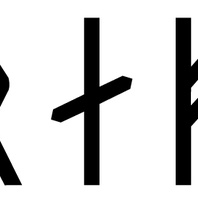
Viking Names
Hrafn
The Old Norse male name Hrafn is found throughout Scandinavia, but is particularly common in Iceland. It means ‘raven’ and belongs to a common group of male names which refer to animals, such as Arn ‘eagle’, Björn ‘bear’, Ulfr ‘wolf’. It is frequently compounded in personal names with other elements, as seen in the Old Norse personal name Hrafnkell, and others. When found in place-names, it is possible that it represents either the Old Norse common noun hrafn ‘raven’ or the Old English common noun hræfn ‘raven’, rather than a personal name. It may also represent a possible Old English personal name Hræfn. Hrafn is seen in the first element of the minor place name Ranskill in the Bassetlaw Wapentake of Nottinghamshire.
Read More
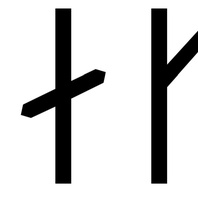
Viking Names
Haki
Haki was originally an Old Norse byname probably identical with Old Swedish and Modern Icelandic haki ‘chin’ possibly with some other meaning developed from this. Some instances of Haki as a personal name and a byname are recorded in Norway. It also appears in Denmark in South Jutland from the end of the 15th century, but it is found early in place-names throughout the country. It is only recorded as a personal name in Swedish runic inscriptions. The name also appears frequently in legendary history. Haki is believed to be the first element in the place-name Haxey, Lincolnshire. The name is also recorded in several medieval sources from Lincolnshire and Yorkshire.
Read More
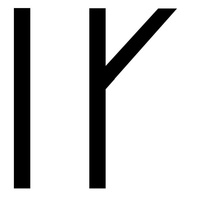
Viking Names
Legg
An original byname, Leggr ‘leg-bone, leg’ appears first in Norway as a byname and is borne by one of the original settlers in Iceland, but is found as a personal name in West Scandinavia. Leggr is the first element of the place name Legsby, Lincolnshire.
Read More
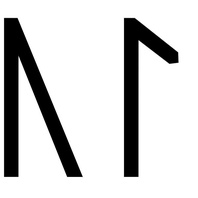
Viking Names
Kol
Kolr is a common male personal name in Norway and Iceland. It is probably related to the Old Norse noun kol ‘coal’ and is attested as the first element in the hybrid name Colston (Bassett) and (Car) Colston in Nottinghamshire. It is also attested as the first element in other Old Norse names, such as Kolbeinn.
Read More
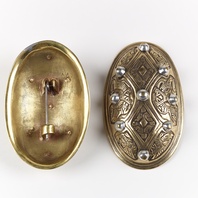
Viking Objects
Reproduction Oval Brooches
Oval brooches were used to fasten dresses in the Viking Age. They are diagnostically Scandinavian and indicate a Scandinavian identity wherever they are found. This pair of brooches is a reproduction of a pair found at Adwick le Street near Doncaster. The mismatched pair were buried with a Norwegian woman who died within a generation of the arrival of the Great Army in the mid-ninth century. Scandinavian brooches came in a variety of sizes and shapes which included disc, trefoil, lozenge, equal-armed, and oval shapes. The different brooch types served a variety of functions in Scandinavian female dress with oval brooches typically being used as shoulder clasps for apron-type dresses and the rest being used to secure an outer garment to an inner shift. Anglo-Saxon brooches do not match this diversity of form with large disc brooches being typical of ninth century dress styles with smaller ones becoming more popular in the later ninth and tenth centuries. However, since disc brooches were used by both Anglo-Saxon and Scandinavian women they are distinguished by their morphology. Scandinavian brooches were typically domed with a hollow back while Anglo-Saxon brooches were usually flat. Moreover, Anglo-Saxon brooches were worn singly without accompanying accessories.
Read More
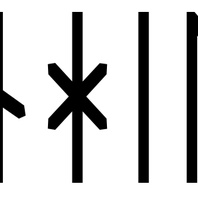
Viking Names
Gunnhild
Gunnhildr is a very common female name throughout the Viking world. In England, the name has a particularly wide geographical distribution that extends beyond the Danelaw and beyond the Viking Age. Its popularity was most likely influenced by its use in the Danish royal family in the eleventh century, when it was borne by an aunt, a daughter and a niece of King Cnut. The name is also the first element of the place-name Gunthorpe, Nottinghamshire.
